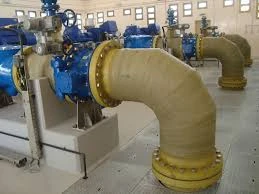
-
 Afrikaans
Afrikaans -
 Albanian
Albanian -
 Amharic
Amharic -
 Arabic
Arabic -
 Armenian
Armenian -
 Azerbaijani
Azerbaijani -
 Basque
Basque -
 Belarusian
Belarusian -
 Bengali
Bengali -
 Bosnian
Bosnian -
 Bulgarian
Bulgarian -
 Catalan
Catalan -
 Cebuano
Cebuano -
 China
China -
 China (Taiwan)
China (Taiwan) -
 Corsican
Corsican -
 Croatian
Croatian -
 Czech
Czech -
 Danish
Danish -
 Dutch
Dutch -
 English
English -
 Esperanto
Esperanto -
 Estonian
Estonian -
 Finnish
Finnish -
 French
French -
 Frisian
Frisian -
 Galician
Galician -
 Georgian
Georgian -
 German
German -
 Greek
Greek -
 Gujarati
Gujarati -
 Haitian Creole
Haitian Creole -
 hausa
hausa -
 hawaiian
hawaiian -
 Hebrew
Hebrew -
 Hindi
Hindi -
 Miao
Miao -
 Hungarian
Hungarian -
 Icelandic
Icelandic -
 igbo
igbo -
 Indonesian
Indonesian -
 irish
irish -
 Italian
Italian -
 Japanese
Japanese -
 Javanese
Javanese -
 Kannada
Kannada -
 kazakh
kazakh -
 Khmer
Khmer -
 Rwandese
Rwandese -
 Korean
Korean -
 Kurdish
Kurdish -
 Kyrgyz
Kyrgyz -
 Lao
Lao -
 Latin
Latin -
 Latvian
Latvian -
 Lithuanian
Lithuanian -
 Luxembourgish
Luxembourgish -
 Macedonian
Macedonian -
 Malgashi
Malgashi -
 Malay
Malay -
 Malayalam
Malayalam -
 Maltese
Maltese -
 Maori
Maori -
 Marathi
Marathi -
 Mongolian
Mongolian -
 Myanmar
Myanmar -
 Nepali
Nepali -
 Norwegian
Norwegian -
 Norwegian
Norwegian -
 Occitan
Occitan -
 Pashto
Pashto -
 Persian
Persian -
 Polish
Polish -
 Portuguese
Portuguese -
 Punjabi
Punjabi -
 Romanian
Romanian -
 Russian
Russian -
 Samoan
Samoan -
 Scottish Gaelic
Scottish Gaelic -
 Serbian
Serbian -
 Sesotho
Sesotho -
 Shona
Shona -
 Sindhi
Sindhi -
 Sinhala
Sinhala -
 Slovak
Slovak -
 Slovenian
Slovenian -
 Somali
Somali -
 Spanish
Spanish -
 Sundanese
Sundanese -
 Swahili
Swahili -
 Swedish
Swedish -
 Tagalog
Tagalog -
 Tajik
Tajik -
 Tamil
Tamil -
 Tatar
Tatar -
 Telugu
Telugu -
 Thai
Thai -
 Turkish
Turkish -
 Turkmen
Turkmen -
 Ukrainian
Ukrainian -
 Urdu
Urdu -
 Uighur
Uighur -
 Uzbek
Uzbek -
 Vietnamese
Vietnamese -
 Welsh
Welsh -
 Bantu
Bantu -
 Yiddish
Yiddish -
 Yoruba
Yoruba -
 Zulu
Zulu
molded grating
The Future of Molded Grating Innovation and Application in Modern Industries
Molded grating is an innovative solution that has become increasingly popular in various industrial applications due to its remarkable benefits and versatility. This engineering marvel has transformed the way industries manage flooring, walkways, and drainage systems. As governments and businesses continue to seek durable, efficient, and cost-effective materials, molded grating stands out as a remarkable choice, driven by both its functional advantages and environmental considerations.
Molded grating is primarily made from fiberglass reinforced plastic (FRP), which provides a lightweight yet robust alternative to traditional materials such as steel or wood. This composite structure not only offers enhanced strength but also corrosion resistance, making it ideal for industries such as chemical processing, waste treatment, and food production—environments where exposure to harsh chemicals and moisture is commonplace. The longevity of molded grating reduces the need for regular maintenance and replacement, leading to significant cost savings over time.
One of the most appealing aspects of molded grating is its customizable design. Manufacturers can produce grating in various sizes, shapes, and colors to meet the specific needs of diverse applications. For instance, industries can require slip-resistant surfaces for safety, load-bearing capacities for walkways, and even translucent panels for natural light transmission. This adaptability ensures that molded grating can seamlessly integrate into the aesthetic and functional requirements of any facility.
Furthermore, molded grating exhibits excellent fire resistance properties, making it suitable for environments where fire safety is a primary concern
. Some molded gratings are designed to meet specific flame spread ratings, which helps in adhering to safety codes and regulations. This feature is particularly beneficial in construction, where safety compliance is a top priority.molded grating

In addition to these advantages, molded grating contributes to sustainability initiatives. The production of FRP involves a reduced carbon footprint compared to traditional materials, as it requires less energy to manufacture and has a longer lifespan. Moreover, molded grating is often made from recycled materials, reinforcing its status as an environmentally friendly option. This aspect appeals not only to businesses aiming to reduce their ecological impact but also to consumers who are increasingly conscious of sustainability.
The applications of molded grating span multiple sectors. In the construction industry, it’s employed for flooring in industrial facilities and platforms for machines, enhancing safety and accessibility. In municipal applications, it is utilized in wastewater treatment plants, providing durable footbridges and drainage covers that withstand the challenges posed by constant water flow and chemical exposure. Additionally, the marine industry benefits from molded grating in docks and piers, where saltwater resistance is crucial.
While the benefits of molded grating are apparent, there are challenges to consider. For example, the initial cost may be higher than traditional alternatives. However, when factoring in its longevity, low maintenance requirements, and enhanced safety features, the overall investment can prove to be financially beneficial in the long run. Education and awareness about the advantages of molded grating are essential to overcoming any hesitation within the industry.
In conclusion, molded grating represents a significant advancement in material technology, offering a multitude of advantages across various industries. With its blend of strength, customization, safety, and sustainability, molded grating is not only a practical solution but also a forward-thinking choice for companies seeking to innovate their operations. As we move towards a more environmentally conscious future, the role of molded grating in modern infrastructure will undoubtedly expand, paving the way for smarter and more sustainable manufacturing practices.
Latest news
-
Exploring the Benefits of Top Hammer Drifter Rods for Enhanced Drilling PerformanceNewsJun.10,2025
-
High-Precision Fiberglass Winding Machine for GRP/FRP Pipe Production – Reliable & Efficient SolutionsNewsJun.10,2025
-
FRP Pipes & Fittings for Shipbuilding - Corrosion-Resistant & LightweightNewsJun.09,2025
-
Premium FRP Flooring Solutions Durable & Slip-ResistantNewsJun.09,2025
-
Premium Fiberglass Rectangular Tanks Durable & Lightweight SolutionNewsJun.09,2025
-
Tapered Drill String Design Guide Durable Performance & UsesNewsJun.09,2025









